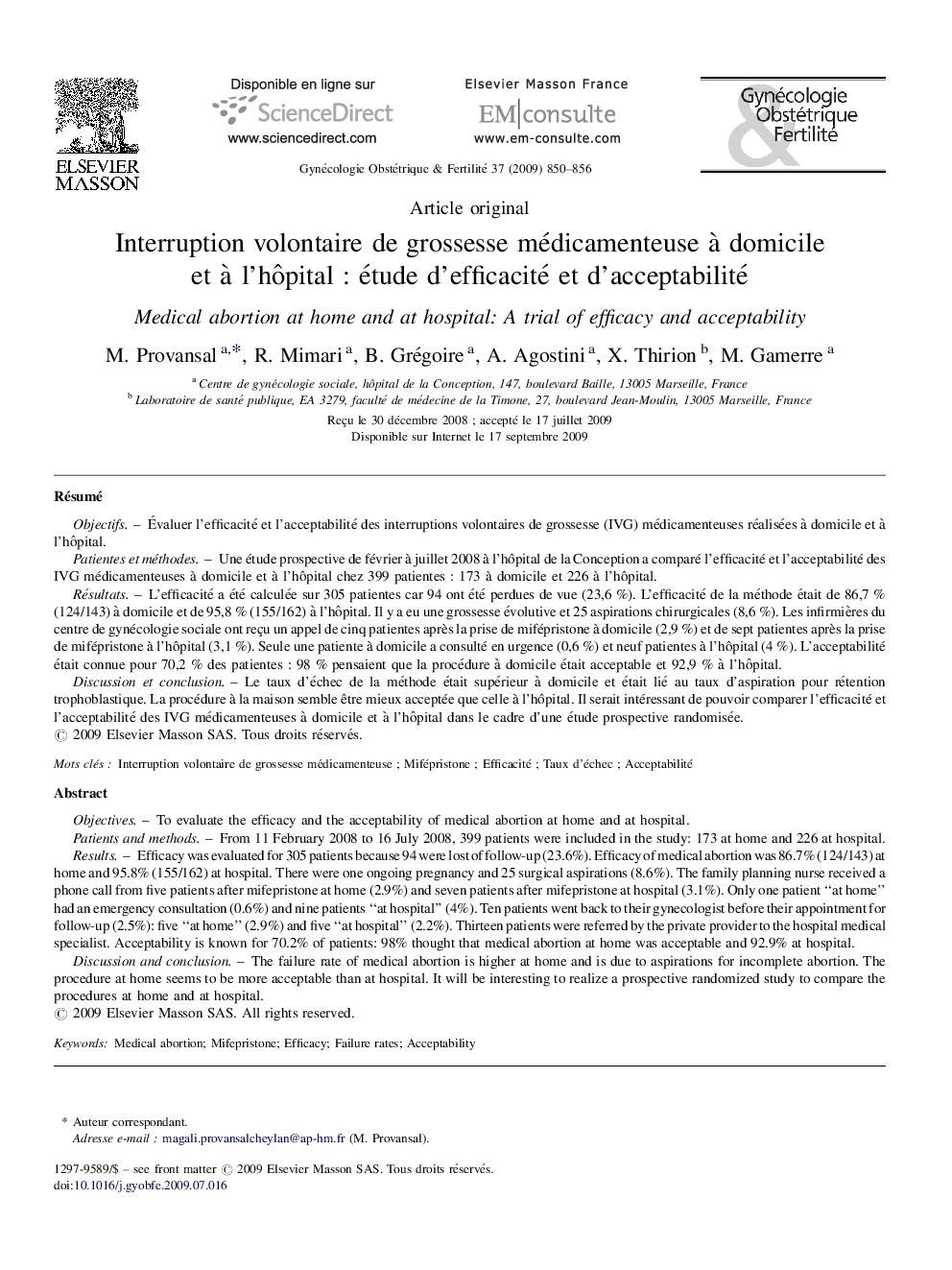| Article ID | Journal | Published Year | Pages | File Type |
|---|---|---|---|---|
| 3949899 | Gynécologie Obstétrique & Fertilité | 2009 | 7 Pages |
RésuméObjectifsÉvaluer l’efficacité et l’acceptabilité des interruptions volontaires de grossesse (IVG) médicamenteuses réalisées à domicile et à l’hôpital.Patientes et méthodesUne étude prospective de février à juillet 2008 à l’hôpital de la Conception a comparé l’efficacité et l’acceptabilité des IVG médicamenteuses à domicile et à l’hôpital chez 399 patientes : 173 à domicile et 226 à l’hôpital.RésultatsL’efficacité a été calculée sur 305 patientes car 94 ont été perdues de vue (23,6 %). L’efficacité de la méthode était de 86,7 % (124/143) à domicile et de 95,8 % (155/162) à l’hôpital. Il y a eu une grossesse évolutive et 25 aspirations chirurgicales (8,6 %). Les infirmières du centre de gynécologie sociale ont reçu un appel de cinq patientes après la prise de mifépristone à domicile (2,9 %) et de sept patientes après la prise de mifépristone à l’hôpital (3,1 %). Seule une patiente à domicile a consulté en urgence (0,6 %) et neuf patientes à l’hôpital (4 %). L’acceptabilité était connue pour 70,2 % des patientes : 98 % pensaient que la procédure à domicile était acceptable et 92,9 % à l’hôpital.Discussion et conclusionLe taux d’échec de la méthode était supérieur à domicile et était lié au taux d’aspiration pour rétention trophoblastique. La procédure à la maison semble être mieux acceptée que celle à l’hôpital. Il serait intéressant de pouvoir comparer l’efficacité et l’acceptabilité des IVG médicamenteuses à domicile et à l’hôpital dans le cadre d’une étude prospective randomisée.
ObjectivesTo evaluate the efficacy and the acceptability of medical abortion at home and at hospital.Patients and methodsFrom 11 February 2008 to 16 July 2008, 399 patients were included in the study: 173 at home and 226 at hospital.ResultsEfficacy was evaluated for 305 patients because 94 were lost of follow-up (23.6%). Efficacy of medical abortion was 86.7% (124/143) at home and 95.8% (155/162) at hospital. There were one ongoing pregnancy and 25 surgical aspirations (8.6%). The family planning nurse received a phone call from five patients after mifepristone at home (2.9%) and seven patients after mifepristone at hospital (3.1%). Only one patient “at home” had an emergency consultation (0.6%) and nine patients “at hospital” (4%). Ten patients went back to their gynecologist before their appointment for follow-up (2.5%): five “at home” (2.9%) and five “at hospital” (2.2%). Thirteen patients were referred by the private provider to the hospital medical specialist. Acceptability is known for 70.2% of patients: 98% thought that medical abortion at home was acceptable and 92.9% at hospital.Discussion and conclusionThe failure rate of medical abortion is higher at home and is due to aspirations for incomplete abortion. The procedure at home seems to be more acceptable than at hospital. It will be interesting to realize a prospective randomized study to compare the procedures at home and at hospital.
